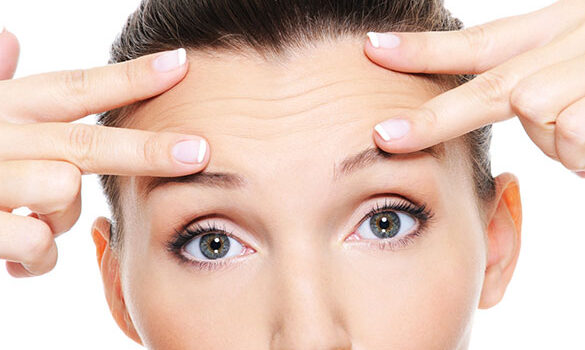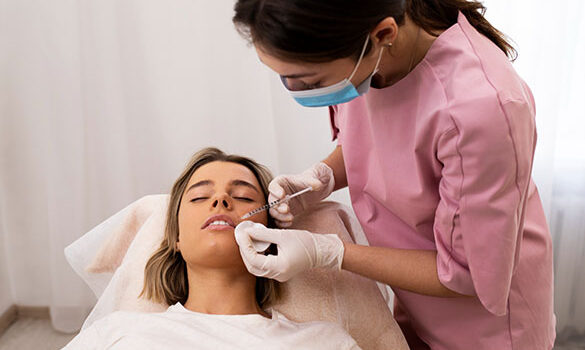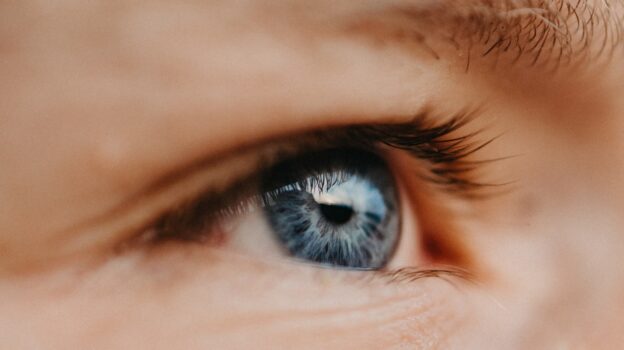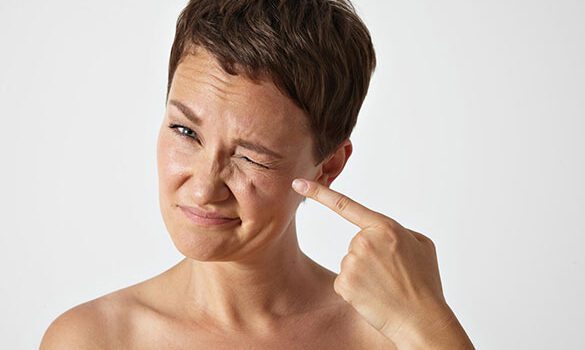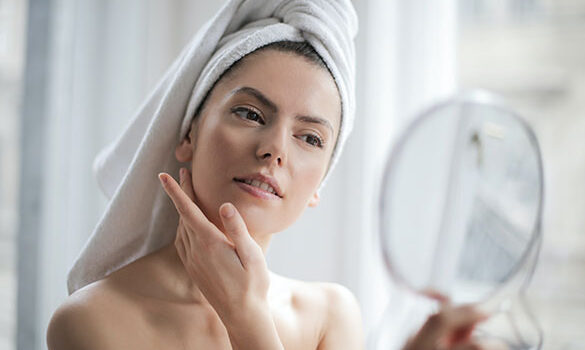Botox is globally recognized as an effective treatment for wrinkles, migraine, and other aesthetic or medical concerns. Although it is a standard procedure embraced by many today, the creator of Botox invented the solution to treat strabismus. After successfully using botulism toxin, ophthalmologist Alan Scott sold the rights to his Botox discovery to a pharmaceutical company in 1991.
After his discovery, there has been further research to identify the effectiveness of Botox. After confirming its effectiveness and safety, more clinics started offering Botox to address a range of problems. To determine if Botox is the right treatment for your aesthetic or medical problem, consult a licensed medical professional at a GraceMed medi spa location for guidance.
Botox can be used for various purposes, but it’s important to educate yourself about your options. If you’re considering Botox, learn more about what the treatment offers and how it can help you with your specific problem.
What is Botox?
To better answer the question what is Botox, it’s essential to know what the solution includes. Botox is one of the most recognized brands of botulinum toxin injections, a drug made from a toxin produced by the bacterium Clostridium botulinum. Botox toxins are neurotoxins that cause muscle weakening by affecting the nerves. Botox can provide many cosmetic and medical benefits when used correctly and in appropriate doses.
How Does Botox Work?
Botox injections block certain nerve chemical signals, focusing on signals that cause muscles to contract. Since the injected muscle cannot contract, the area relaxes and softens.
GraceMed offers Botox in Toronto and other GTA cities, allowing you to enjoy the benefits of the treatment in different regions. You can trust our medically licensed professionals to administer the injection safely in appropriate doses for the best results.
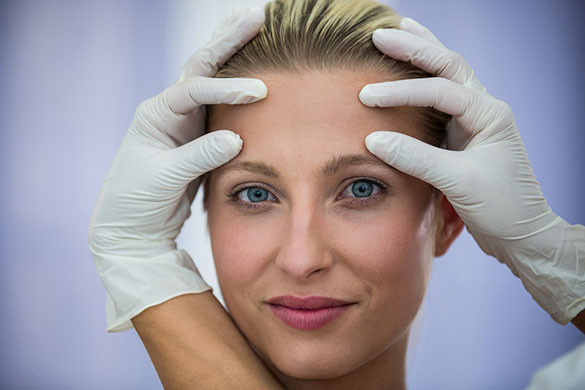
What is Botox Used For?
A common question that arises when determining the use of the treatment is what does Botox do? Botox offers solutions to various medical and cosmetic problems, and the dosage required depends on the area you’re treating and the degree of the problem.
Facial Wrinkles
When you take some time to learn what causes wrinkles, you’ll better understand how Botox can help you. Wrinkles can appear for various reasons, such as aging, genetics, sun exposure, and repeated facial movement.
Botox works on various types of wrinkles, such as wrinkles caused by age or repetitive movements. It is more commonly used to treat wrinkles on the upper portion of the face, such as the forehead, or areas with expression lines. If you want to use Botox around your eyes, you may wonder, how long does Botox take to work on crow’s feet? The timeframe depends on the level of wrinkles, the cause of wrinkles, and the dosage administered. It generally takes about three days for results to appear when the muscles around your eyes begin to relax.
Another common question injectors often receive is, how does Botox work for wrinkles? When a specialist injects the solution into your skin, the injected muscle cannot contract, resulting in relaxed and softened wrinkles.
If you want to find out how long does Botox take to work on frown lines or other specific facial areas, speak to a specialist at one of GraceMed’s convenient locations. Medically licensed professionals can help you determine an approximate timeline of results depending on how many units of Botox they administer.
Depending on your target area, our specialists may also recommend alternative treatments. There are a few types of dermal fillers you can choose from, depending on your aesthetic goals. If you’re more concerned about volume loss, smoker’s lines, or lack of jawline definition, they may suggest dermal fillers as an alternative to Botox.

Excessive Sweating (Hyperhidrosis)
Excessive sweating, also known as hyperhidrosis, is a condition causing an individual to abnormally sweat in situations not necessarily related to heat or exercise. Research suggests a connection between excessive sweating and mental health conditions. According to a study, roughly 21 percent and 27 percent of people with hyperhidrosis screened positive for anxiety or depression. These findings do not indicate that hyperhidrosis necessarily causes mental health issues; however, there is a correlation between the two.
Botox is often used as a treatment to control excessive sweating, but how does Botox work for this condition? Botox injections alter the functions of neurotransmitters – chemicals in the body that instruct the body to react in a certain way by binding sweat glands to signal the release of sweat.
When you receive Botox injections directly into the area that frequently sweats, the nerves go into a state of paralysis, restricting your nerves from signalling to sweat glands. The effectiveness of the treatment depends on how many units of Botox you receive and the area it is administered.
Chronic Migraine
A migraine is a headache that can cause throbbing pain, usually on one side of the head. People with a history of chronic migraine suffer from headaches for 15 or more days a month, and the effects can last four hours a day or longer. After Health Canada approved the use of Botox for the treatment of chronic migraine in 2011, more clinics started offering the treatment. Researchers have been conducting more studies to test the efficacy of this treatment for chronic migraines. But how does Botox work for migraines?
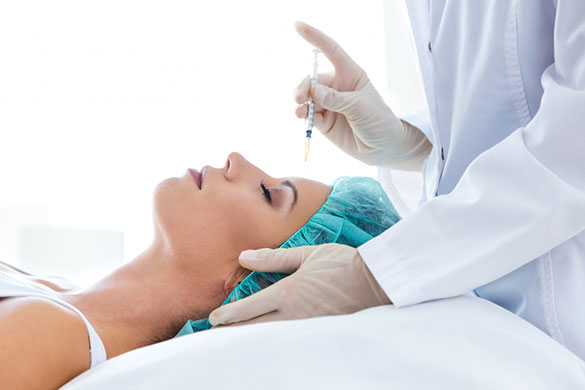
Botox works by blocking chemicals called neurotransmitters that carry pain signals from your brain. The blockage prevents chemicals from getting into the nerve endings around your head and neck. Botox can also relieve some muscle contraction associated with the pain, forcing the muscles to relax.
To better understand why medical professionals recommend Botox for migraines, visit one of GraceMed’s clinics and speak to a specialist.
Neck Spasms (Cervical Dystonia)
Neck spasms can occur due to cervical dystonia, a painful neurological disorder that causes neck muscles to contract involuntarily, causing the head to twist or turn to one side. According to research, most isolated cervical dystonia has no identifiable underlying causes. However, the condition can affect the quality of life and activities of daily living, including employment.
Cervical dystonia typically begins in middle age, but it can affect individuals of any age. The symptoms usually begin slowly and involve any of the neck muscles. If you suspect that you may be developing the condition, it is crucial to seek medical care immediately. Identifying the problem ahead of time will allow you to access treatment in the early stages.
Botox is one of the most common treatments for neck spasms. So, how does Botox work on neck spasms? Botox works by preventing nerves from releasing acetylcholine. This restricts your nerves from sending messages to muscles telling me to spasm or contract.
A clinical study found that people given Botox injections for cervical dystonia began noticing improvement in their condition within the first two weeks of receiving a dose. When a medical professional administers Botox to treat neck spasms, they can recommend how many units of Botox you need to see the best results.

Overactive Bladder
Overactive bladder, also called OAB, causes a sudden urge to urinate that may be difficult to control. You may feel the need to urinate several times during the day and may wake up to go to the bathroom in the middle of the night. This can also lead to unintentional loss of urine (urgency incontinence).
According to the Canadian Continence Foundation, 18.1 percent of Canadians aged 35 years or older have an overactive bladder. Those affected by the condition may limit their social activities, affecting the quality of their life and potentially causing isolation and emotional distress.
One of the many benefits of Botox is that it can help control the symptoms of an overactive bladder. When Botox is administered into the bladder muscle, it treats the thick muscle bands, known as trabeculation. Temporarily paralyzing the portion of the bladder that causes the outflow will prevent the bladder from producing unexpected leakage.
If your overactive bladder leads to excessive urinary incontinence and causes embarrassment or prevents you from partaking in social activities, you can also opt for an alternative treatment. A breakthrough treatment for incontinence that you can try is Emsella. The BTL Emsella chair offered at GraceMed’s Oakville and Burlington clinics is a non-invasive in-office treatment option for stress and urgency urinary incontinence. The unique technology incorporates high-intensity focused electromagnetic energy (HIFEM) to contract your pelvic floor muscles over 10,000 times in a 28 min session.
Lazy Eye (Amblyopia)
People with lazy eyes develop poor vision in one of the eyes, and the most common cause of the condition is the imbalance in the muscles that position the eyes. The imbalance can result in the eyes crossing or turning out, making it challenging for them to work together.
Botox is often used to improve an individual’s aesthetic appearance by targeting glabellar lines, crow’s feet, and forehead lines. It is also effective in preventing lazy eyes from causing vision problems. The injection temporarily weakens the muscle and allows the eyes to realign. When the muscle is weak, it has less power to squint and develops a lazy eye.
Although Botox is effective for a lazy eye, it is not a permanent solution. Depending on how long the treatment lasts, you may need to visit a medical professional every few months for more doses. If you find yourself squinting often, consult a medical professional immediately to prevent the matter from escalating. Treating squinting habits early on can prevent a lazy eye from occurring.
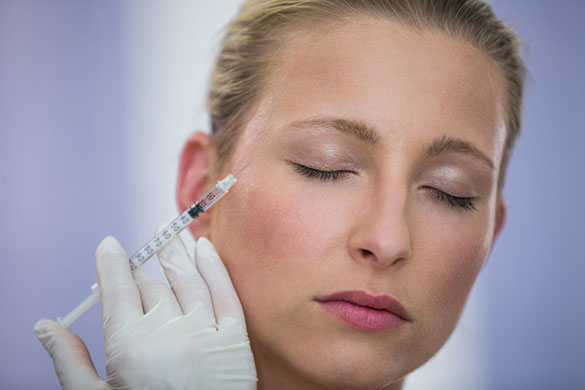
Eye Twitching
An eye twitch results in an involuntary, abnormal blinking of your eyelid and can occur several times per day. If you notice your eyes frequently twitching, seek medical help to prevent the condition from affecting your vision.
You may experience eye twitching if you’re tired, stressed, or overcaffeinated. Eye twitching isn’t harmful if it occurs occasionally. However, eye twitching can sometimes be a symptom of a more severe condition, such as Bell’s palsy, cervical dystonia, multiple sclerosis, and Parkinson’s disease. If you notice yourself twitching often, it might be time to seek medical treatment. You can use Botox to treat eye twitching as the injection can stop muscles from contracting, allowing the muscles to relax.
OHIP may cover your Botox treatment if you’re experiencing eye twitching due to a medical condition. According to the Ministry of Health and Long-Term Care, Botox injections used to treat focal spasticity secondary to an upper motor neuron disorder like cerebral palsy are covered by OHIP. However, every case is unique, so it is best to consult your healthcare provider for accurate information about your coverage.
OHIP does not cover the cost when you use Botox or other injectable treatments, such as dermal fillers, for cosmetic purposes. You can find out Botox and dermal fillers cost in Toronto or other cities where the procedure is offered by contacting a GraceMed clinic directly.
Using Botox for Your Condition
Our specialists love to answer a common question: what is Botox used for? Botox is a powerful solution to many problems, and it tackles each condition differently. The key to utilizing Botox for your specific condition is learning how the treatment can help you.
One of the most common myths about injectables is that they are only used for wrinkles. However, injectables are a versatile treatment that offers a solution for different medical and cosmetic problems. To determine which treatment best suits your needs, book a consultation at one of GraceMed’s clinics and learn more about your options.








